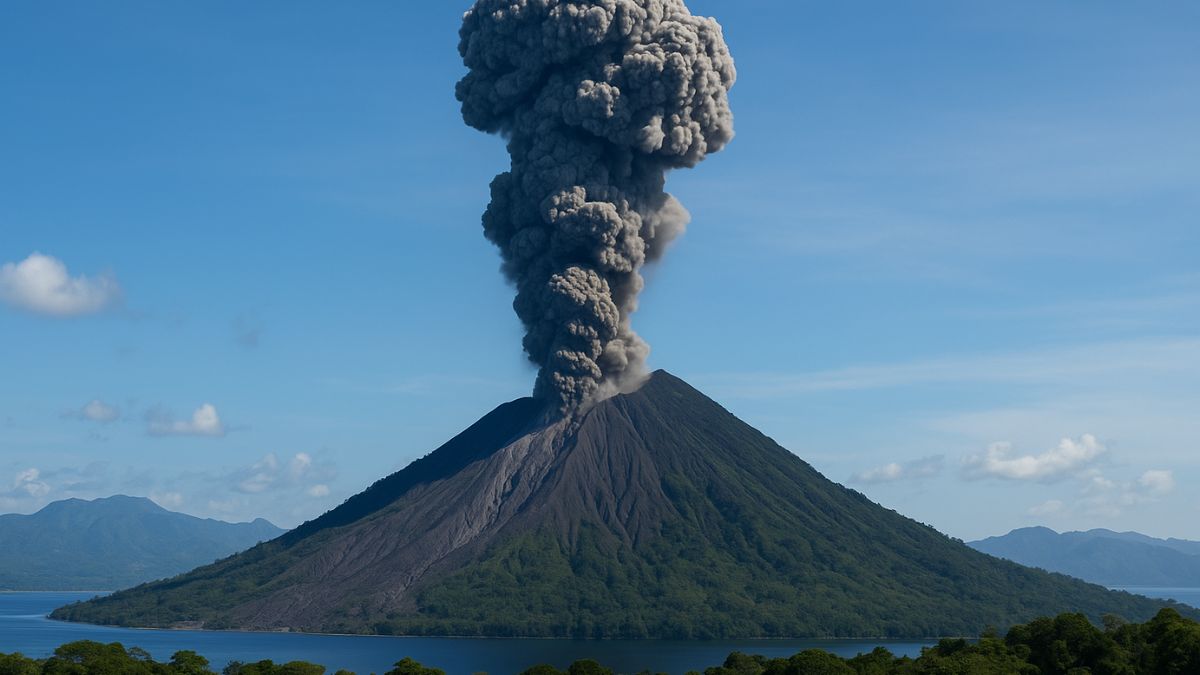New York: For anyone who’s ever looked up at a volcano and felt a mix of awe and unease, what happened on June 17, 2025, at Mount Lewotobi Laki‑Laki is the real deal. This wasn’t just a puff of smoke—it was an earth‑shaking display of raw nature. A plume of ash shot skyward nearly 10 km, visible from hundreds of miles away, setting alarms off from local villages to international flight paths.
Now picture this: communities in Flores island waking to the ground trembling beneath them, faces masked against an ash rain, families hurried into evacuation shelters. Even seasoned volcanologists describe it as one of the most intense bursts they’ve seen—50 tremors in two hours, compared to the usual 8–10 daily activity.
But beyond the spectacle lies a deeper emotional thread. How do you cope when your home becomes part of a disaster movie? How can you feel safe when the mountain you thought was distant suddenly towers over your life? That human question—how we respond, rebuild, and even heal—is the story we unpack today.
What Is Mount Lewotobi Laki‑Laki?
Mount Lewotobi is actually a pair of partner‑volcanoes on Flores island: Lewotobi Laki‑Laki (“male”) at 1,584 m and its quieter twin, Perempuan (“female”) at 1,703 m. Laki‑Laki is known for its powerful eruptions: seismic unrest dates back to spring 2023, and major blasts occurred late 2024 and May 2025.
How Did the June 17 Eruption Unfold?
On the afternoon of June 17, authorities recorded around 50 tremors in just two hours—way above normal. Then came the grand crescendo: a mushroom‑shaped ash cloud towered ~11 km (6.8 miles) into the sky. Visuals showed a brooding mushroom cloud visible up to 150 km away.
Emergency services quickly raised the volcano alert to Level IV, the highest tier in Indonesia’s system, and extended the hazardous zone out to 8 km from the crater.
Also Read: The Dark Truth Beneath Lake Lanier: Deaths, Hauntings & a Drowned Town
Who’s Affected and What Comes Next?
Thankfully, no fatalities have been reported from this eruption, but the potential for lahar—volcanic mudflows triggered by rain—is high. Advice to wear masks is widespread, as ash rain settles on roofs, crops, and water sources . Residents, especially those living near river valleys, have been advised to stay alert and avoid low‑lying roads.
Indonesia Volcano Alert: What This Means for Travel & Climate
An aviation red‑alert has been issued, with regional warnings from Australia and even concern from Japan about tsunami possibilities. That said, major flight disruptions aren’t confirmed yet—Bali flights were affected in May 2025, so eyes remain on ash drift patterns.
Globally, volcanic eruptions like this are reminders of Earth’s living systems—and how communities and climate can ripple far beyond the blast zone.







